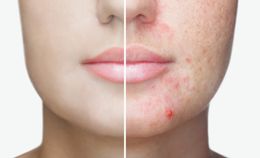Maybe you have tried and found success in enhancing your state of health and wellness through hypnotherapy? Or perhaps you are experiencing depression, anxiety, pain, or simply want to stop smoking? Either way, hypnotherapy and how it works may be on your mind.
How Hypnotherapy Works
There are many elements to how hypnotherapy works. The answer to how hypnotherapy works is not as simple. There are many factors that come into play in figuring out the how and why of hypnotherapy. By the end of our exploration of how hypnotherapy works, we will have a solid understanding off all the interconnected factors.
4 Different Models of Understanding How Hypnotherapy Works
From the past to the present any have wanted to understand how hypnotherapy works. Here is a list of five different ways science has aimed to understand how hypnotherapy works:
Dissociation model: Looks at how hypnotherapy works in relation to different degrees of both associations and dissociations connected to mental processes.
Social cognitive model: Examines how hypnotherapy works in relation to social factors: such as motivations, attributes, abilities, expectations, and beliefs.
Ability-aptitude model: Asserts hypnotherapy works because of a causal role that exists two main elements:
A learned behavior or talent on the part of the people choosing hypnotherapy to enter a state of hypnosis.
The power of belief people have for how they will respond while being in a hypnosis state.
Social-psychobiological model: Explores how hypnotherapy works through the relationship that builds and forms between the people that are seeking hypnotherapy and the hypnotherapist who provides the therapy sessions.
Each of these four models provides information on how hypnotherapy works based on the element that it focuses on.
So although each one has over the years provided some insight into how hypnotherapy works, each of these four models provides an explanation without recognizing the others.
It is important to point out that even though each of the different models may exclude the others; each model is still consistent, viable and informational - each model has the ability to grow our understanding of how hypnotherapy works in regard to the components of hypnotherapy that each of model focuses on.
That being said, the four models of understanding how hypnotherapy works have limitations. These limitations exist because without taking into consideration all factors and how each factor works together an overarching model and framework cannot exist of all factors that contribute to hypnotherapy working to achieve the positive results that it has with many different conditions.
On the other hand, the fact that none of the existing models takes into account all of the factors that have been shown to be associated with hypnotic responding suggests that each existing model also has important limitations. The field lacks an overarching model or framework for organizing the many factors that may contribute to hypnotic responding.
3 Domains to Understand How Hypnotherapy Works
There are three domains to consider when understanding how hypnotherapy works:
Biological
Psychological
Social
The study, MECHANISMS OF HYPNOSIS: Toward the Development of a Biopsychosocial Model, concluded the following findings to be true:
Domain dominance: Out of the three domains, one did not stand out on its own as the most important or prominent in the factors that lead to an explanation for how hypnotherapy works.
Individual differences: Depending on the person being treated, each of the three domains impacts how hypnotherapy works with a greater or less level. The contributing level of each domain is tied to each individual person and who they are as a person.
Different conditions: Similar to how the individual differences of people as a whole playing a part in the weight placed on the three different domains for how hypnotherapy works, the same holds true for different health conditions. Different conditions were found to place a greater or lower level contribution on each of the three domains, and it was dependent on the different individual health conditions being used to evaluate how hypnotherapy works.
Inclusion of all domains: It was found that models of understanding how hypnotherapy work that incorporates factors and elements of all three domains provide the most useful knowledge.
From these findings of the three domains, the biopsychosocial model was proposed and evaluated.
The Biopsychosocial Model for Understanding How Hypnotherapy Works
The aim of the biopsychosocial model is to have a model that creates a map of all the factors that play a role in how hypnotherapy works and serves as a way of demonstrating how all the factors combined enable a thorough explanation of the how and why hypnotherapy works - the factors are interlinked and the biopsychosocial model shows how.
Chart of Factors for How Hypnotherapy Works Through the Biopsychosocial Model
The chart below provides an overview of the factors the biopsychosocial model takes into consideration based on the three domains:
Biological Factors:
Hypnotizability
Psychological Factors:
Hypnotizability
Expectations
Motivation
Absorption
Imaginative Involvement
Fantasy Proneness
Attitudes Toward Hypnosis
Social Factors:
Rapport
Relationships
Resonance and Harmony
The Social and Psychological Reasons Why Hypnotherapy Works
When relationships and rapport exist between two people such as the person going to a hypnotherapy session and the hypnotherapist, there exists a higher level of comfort, openness, and calmness. Is why hypnotherapists will often, offer an introductory session to make sure that both client and therapist are a good fit for each other and the wellness needs that are going to be addressed through hypnotherapy. Hypnotherapists will also spend more time on the first session to help build a solid relationship and report with the person that they are serving.
Through these elements, factors, and domains. Hypnotherapy works by enhancing the level to which a person is open to hypnotic suggestion and able to go into a state of hypnosis through hypnotherapy sessions.
Hypnotizability and the Brain
The one biological factor of the biopsychosocial model for understanding how hypnotherapy works is hypnotizability - the level of ability for a person to enter the state of hypnosis. In order to understand how this factor and domain plays a role in how hypnotherapy works, the following imaging tools were used in the formation of the model:
PET
MRI
MEG
EEG
What a Person's Hypnotizability does to the Brain
There each person has a different level to their hypnotizability level. Some people have a low hypnotizability level while others have a high. The level of a person's hypnotizability is often assessed and determined through a scale for hypnotizability or through a standardized test of hypnotizability. People who score high on a hypnotizability scales produce a different pattern of neurophysiological response during hypnotherapy in compared to those that score low on the hypnotizability scales. This lead to the understanding that hypnotherapy works by creating changes in the brain.
Want to know what changes occur in the brain during a hypnotherapy session and when a person enters the state of hypnosis?
4 Changes in the Brain During Hypnotherapy
Hypnotherapy works from the biological domain because the following changes occur in the brain during hypnotherapy:
Pain: The areas of the brain that control how humans feel pain are impacted through the process of hypnotherapy and being put into the state of hypnosis.
Hemispheric asymmetry: Hypnotherapy is influenced and impacted by both hemispheres of the brain.
Connectivity: A connectivity between brain areas, fluctuates during a hypnotherapy session; with both increases and decreases.
Structural connectivity: During hypnotherapy and when in a state of hypnosis, the brain experiences higher levels of structural connectivity.
The higher levels of structural connectivity that occur during hypnotherapy sessions when it comes to the biological aspect of why hypnotherapy works - particularly with pain-related conditions and with alleviating conditions like depression and anxiety.
Final Thoughts on What the Biopsychosocial Model Does for Hypnotherapy
The biopsychology model of understanding how hypnotherapy works is a map and a framework for growing our understanding. It includes all three main domains that contribute to how hypnotherapy works. It is also a model that provides confirmation that the how and who hypnotherapy works is complex and cannot be explained a single domain or factor such as biological, psychological, or social.
11 Conditions Hypnotherapy Works
Hypnotherapy is a treatment option for many different ailments and conditions according to the NIH. Through research and different studies, hypnotherapy has been proven to be effective for and used for medical purposes for:
Anxiety
Depression
Chronic pain
Acute pain
Cancer
PTSD
Sleep and insomnia
Weight loss
Smoking
Pregnancy
Addiction
ADHD
References
Hypnosis for Medical Purposes. (2016, March 22). Retrieved January 3, 2019, from https://nccih.nih.gov/research/blog/hypnosis-for-medical-purposes
Jensen, M. P., Adachi, T., Tome-Pires, C., Lee, J., Osman, Z. J., & Miro, J. (2015). Mechanisms of hypnosis: toward the development of a biopsychosocial model. The International journal of clinical and experimental hypnosis, 63(1), 34-75. Retrieved January 3, 2019, from https://www.ncbi.nlm.nih.gov/pmc/articles/PMC4220267/





















